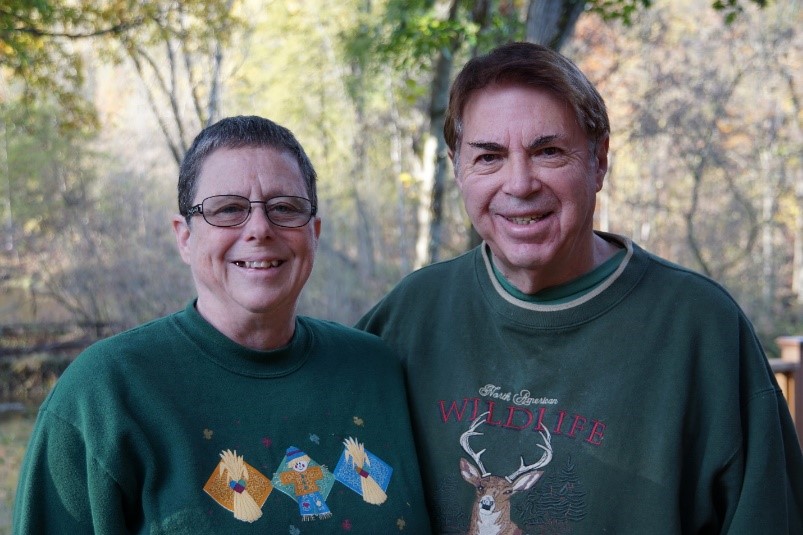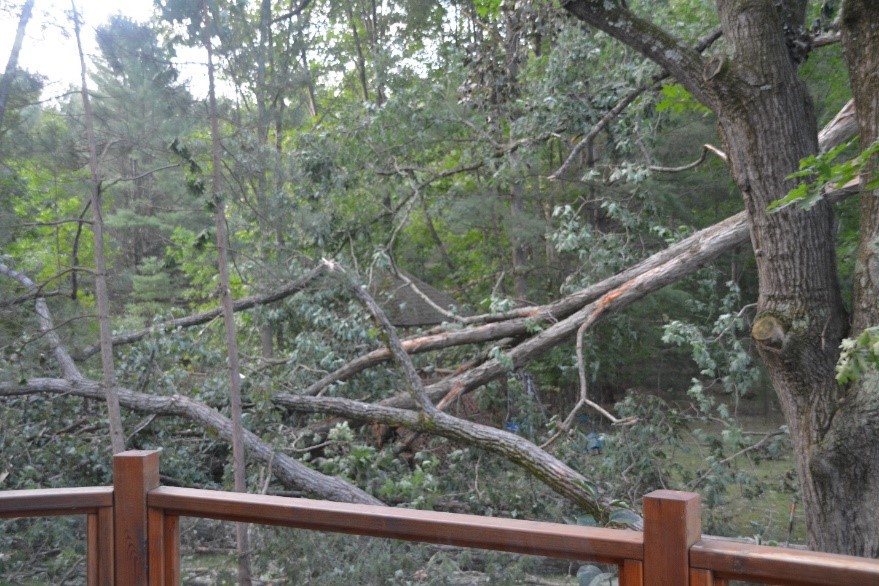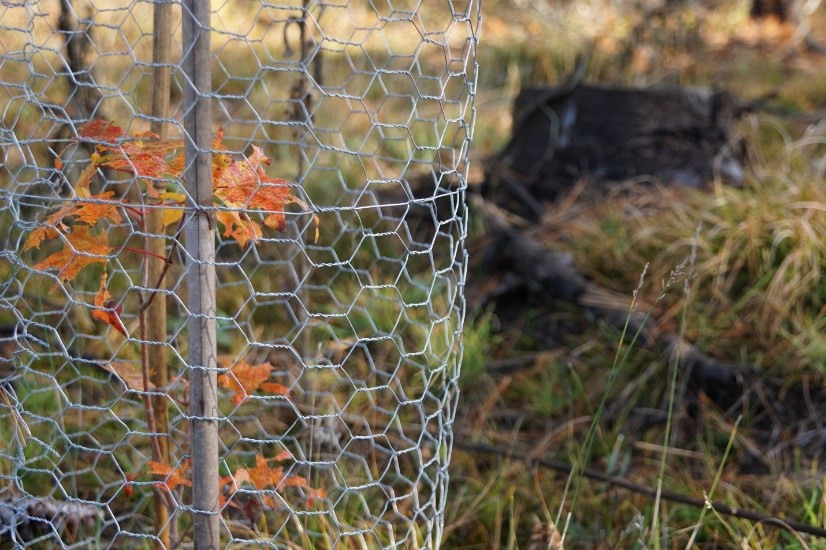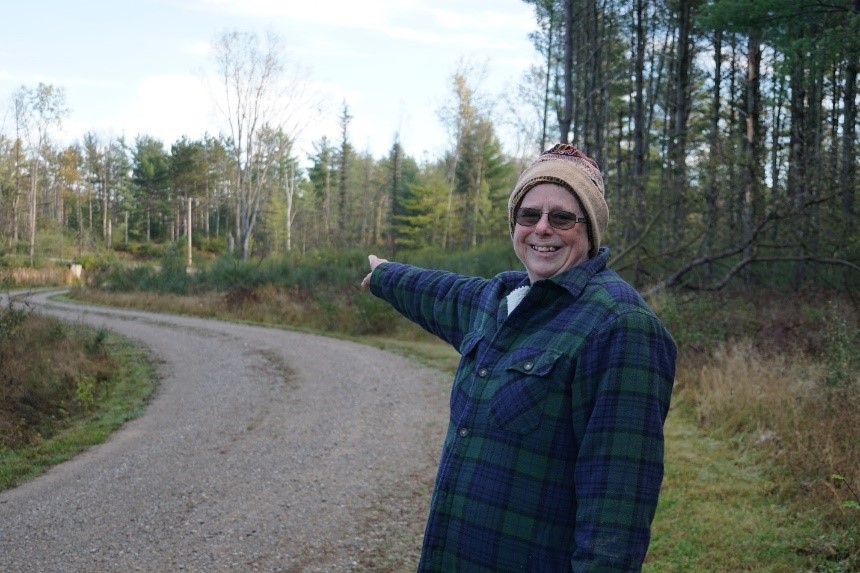This Friday meet Tom and Deb Schoenborn, private forest landowners in Sterling, Michigan. Living in the area for over 40 years, the couple emerged from their basement in September 2019 to the aftermath of a devastating tornado that raged within 100 feet of their home.
“That was the scariest thing I’ve ever experienced,” said Deb. “We were very lucky.”

Clearing the Damage
While the tornado spared their home, it destroyed over eight acres of the hardwood forest that surrounded it. Twisted, snapped, and uprooted trees crisscrossed the landscape, where a vibrant, healthy forest once stood.
“It took our next-door neighbor an hour to check on us after the storm because the driveway was covered six feet high with downed trees,” said Deb. “It took a week for logging crews to just clear the driveway to our house.”

Wind events, like tornados, damage the trees, rendering them useless for lumbering. Leaving the trees to decay would take up to a decade, all while harboring pests and posing a potential fire-hazard threat. Clearing downed trees and restoring the forest was estimated to cost about $3,000 per acre out of pocket, with no cost recovery from the wood materials.
“This was a tornado, a natural disaster. I knew there had to be support somewhere to help us with this,” Deb said.
Assistance from USDA
The Schoenborns discovered the Emergency Forest Restoration Program through USDA’s Farm Service Agency, which provides cost-share payments to eligible owners of nonindustrial private forest land to carry out emergency measures to restore land damaged by a natural disaster.
These cost-share payments cover up to 75 percent of the cost to implement approved restoration practices, such as debris removal for downed or damaged trees, site preparation and labor to replant forest stand, restoration of forestland roads or erosion control structures, and wildlife enhancement to provide cover openings and wildlife habitat.
The on-site damage inspections provided by the Michigan Department of Natural Resources and Arenac Conservation District showed that the type and extent of tree cover damage made their land eligible for EFRP. The FSA County Committee in Arenac County coordinated an EFRP signup for impacted landowners wanting to participate.

With financial assistance through EFRP and technical assistance from the District Forester, 28 local landowners were able to clear nearly 400 acres of downed trees, helping to restore and protect the forest.
Two years after the tornado, Deb and Tom are again able to enjoy their forest and the deer, beaver, woodchucks, and other wildlife that it supports. Hardwood saplings grow in protective sleeves alongside stump remnants of trees once in the tornado’s path.
“Without that USDA program [EFRP], I don’t know what we would have done,” said Deb.
Additional Programs for Tornado Recovery
USDA offers many programs to help producers and landowners recover from losses, including the Livestock Indemnity Program, the Emergency Conservation Program, the Emergency Assistance for Livestock, Honeybees, and Farm-Raised Fish Program, and the Tree Assistance Program.
Producers located in counties receiving a primary or contiguous disaster designation are eligible for low-interest emergency loans to help them recover from production and physical losses. Additionally, FSA has a variety of loan servicing options available for borrowers who are unable to make scheduled payments on their farm loan debt to FSA because of reasons beyond their control.

Compensation is also available to producers who purchased coverage through FSA’s Noninsured Crop Disaster Assistance Program, which protects non-insurable crops against natural disasters that result in lower yields, crop losses, or prevented planting.
Learn about USDA disaster assistance programs that might be right for you by using the Disaster Assistance Discovery Tool on Farmers.gov.
More Information
Each Friday visit local farms, ranches, forests, and resource areas through our Fridays on the Farm stories. Meet farmers, producers and landowners who are working to improve their operations with USDA programs.
USDA offers a variety of risk management, disaster assistance, loan, and conservation programs to help producers weather ups and downs in the market and recover from natural disasters as well as invest in improvements to their operations. Learn about additional programs.
For more information about USDA programs and services, contact your local USDA service center.
Savannah Halleaux is the communications coordinator for FSA in Michigan.


